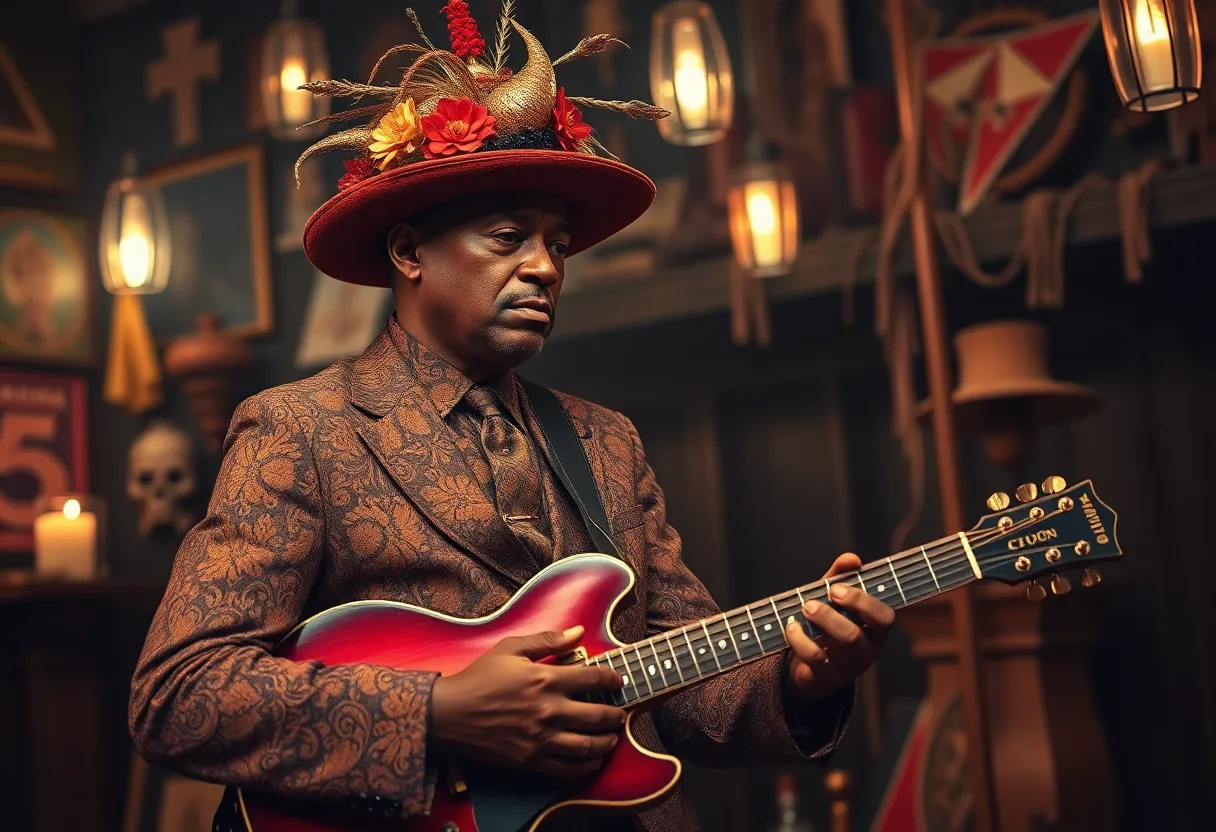News Summary
David Toop’s new book, ‘Two-Headed Doctor: Listening for Ghosts in Dr. John’s Gris-Gris’, examines the profound legacy of the musician Dr. John, who passed away in 2019. Focusing on his 1968 album ‘Gris-Gris’, the book discusses cultural authenticity, appropriation, and the complex identity of the artist. Toop invites a deeper reflection on Dr. John’s contributions to music and the societal dialogues surrounding artist identity today.
New Orleans, LA – A new book titled “Two-Headed Doctor: Listening for Ghosts in Dr. John’s Gris-Gris” authored by David Toop dives into the intricate legacy of the iconic musician Dr. John, also known as Mac Rebennack. Dr. John passed away on June 6, 2019, leaving behind a profound impact on the music scene. His career was marked by numerous accolades, including induction into the Rock & Roll Hall of Fame and six Grammy Awards.
Toop’s book, released recently, addresses the complexities surrounding Dr. John’s artistry, particularly focusing on his debut album “Gris-Gris,” which was launched in January 1968. The album is characterized as a transformative yet problematic body of work, enriched with elements of voodoo and hoodoo, that provokes discussions about cultural authenticity and appropriation. Toop highlights how Dr. John’s artistic persona—a character known as “the Night Tripper”—was shaped by diverse cultural influences, yet raises questions regarding the origins and representations of those influences.
“Gris-Gris” hosts seven tracks that altogether run for a concise 33 minutes and 19 seconds. Toop uses this album as a pivotal point in his exploration of music and sound, noting how it confounded audiences and critics upon its release. Initial marketing challenges faced by the album prompted music executives like Ahmet Ertegun of Atlantic Records to express disbelief regarding how to promote it effectively. Critics at the time questioned the authenticity of Dr. John’s creation, suggesting he was essentially a construct of a white studio musician.
Despite the doubts surrounding its marketing, “Gris-Gris” became an underground sensation, gaining traction on FM radio and finding a unique audience among rock fans. Key figures involved in the album’s production, such as notable producer Harold Battiste, played a crucial role in molding Dr. John’s distinctive sound from local artistry into commercial success, facilitating a broader appeal while attempting to maintain the essence of New Orleans music.
Dr. John’s career began in the 1950s, during which he garnered acclaim for his ability to meld genres such as funk, jazz, and rock. Following his battle with addiction, which he overcame in the late 1980s, his output remained prolific, with four additional albums released posthumously that highlighted his enduring influence on the musical landscape.
Toop’s exploration aims to provoke dialogue surrounding the relationship between an artist’s identity and the work they produce. The book serves as a comprehensive guide, inviting readers to delve deeper into Dr. John’s significant contributions to music history while also encouraging a broader reflection on cultural representation in the arts. The narratives explored throughout the book resonate with the ongoing conversation in contemporary music about the art-versus-artist dilemma.
Examining Dr. John’s multifaceted identity and legacy, Toop emphasizes that criticism can act as a form of recognition and appreciation for complex musical figures. The ongoing discussions surrounding Dr. John’s contributions not only celebrate his rich musical heritage but also serve as a reminder of the vital dialogues about identity, culture, and creativity in today’s music scene, making “Two-Headed Doctor” a timely and vital addition to the conversation.
Deeper Dive: News & Info About This Topic
HERE Resources
New Orleans Announces Musical Tribute for Irma Thomas
Additional Resources
- The Advocate: Dr. John and New Orleans Music
- The Guardian: Dr. John – New Orleans’ Elusive Genius
- OffBeat: Dr. John’s Estate Commemorates Five Years
- Wikipedia: Dr. John
- Google Search: Dr. John

Author: STAFF HERE NEWORLEANS WRITER
The NEW ORLEANS STAFF WRITER represents the experienced team at HERENewOrleans.com, your go-to source for actionable local news and information in New Orleans, Orleans Parish, and beyond. Specializing in "news you can use," we cover essential topics like product reviews for personal and business needs, local business directories, politics, real estate trends, neighborhood insights, and state news affecting the area—with deep expertise drawn from years of dedicated reporting and strong community input, including local press releases and business updates. We deliver top reporting on high-value events such as French Quarter Festival, New Orleans Jazz & Heritage Festival, and Essence Music Festival. Our coverage extends to key organizations like the New Orleans Chamber of Commerce and Greater New Orleans, Inc., plus leading businesses in energy, healthcare, and education that power the local economy such as Entergy, Ochsner Health, and Tulane University. As part of the broader HERE network, including HEREShreveport.com, we provide comprehensive, credible insights into Louisiana's dynamic landscape.




